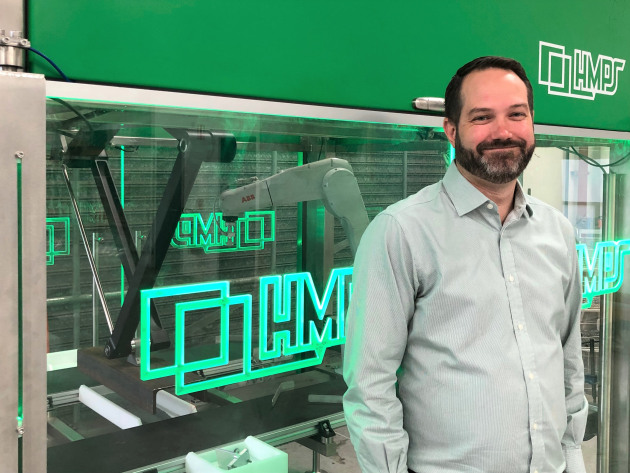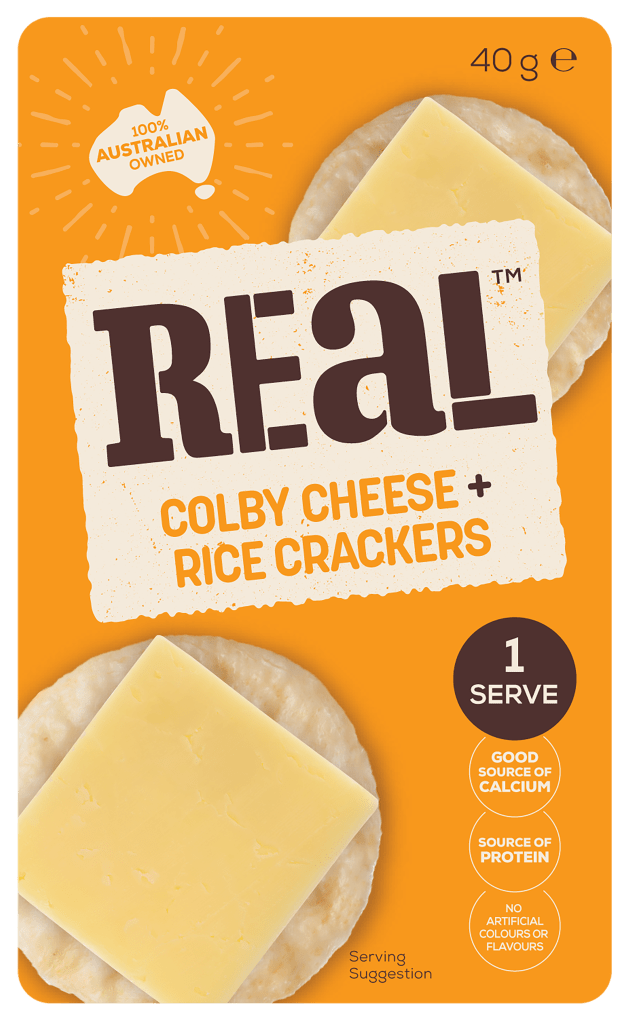Local OEM HMPS Group has designed and developed a sleever and cartoner in one footprint for Australian cheesemaker Real Dairy.
Real Dairy is a 100 per cent Australian-owned and operated company, employing more than 250 people across Queensland, NSW and Victoria. The company produces its own speciality cheese products and supplies these to retailers across the country.
According to HMPS, the intricate merging of two processes spells significant savings and prospects, not only for Real Dairy, but for the packaging industry at-large.
Adam Reed, sales manager at HMPS, explained that this first-of-a-kind machine offers a small footprint, enhanced efficiencies, and long-term cost savings.

“This system – the HMPS5000 – can handle pre-glued sleeves in two, three and four cell trays at up to 180 trays/minute for the two cell trays,” Reed continued.
“With minimal changeover, it can also operate as an end load cartoner erecting, loading and hotmelt sealing primary cartons.”
HMPS supplied two complete units for this project, allowing Real Dairy to handle up to 360 trays/minute.
Speaking to the process, Reed explained that products are transferred onto HMPS’ specially-designed merge system from preceding processes, where two lines of product are merged into one line for loading into the HMPS5000 sleever/cartoner.
“Our team developed and commissioned this machine within a 32-week period. Combining two machines into one is extremely complex, but rewarding, particularly for the end user,” Reed said.
“Generally, these tasks would be handled by two different style machines, and in this case, we had to figure out how to fit four machines into two machines.”

Upon entry into the machine, the product (cheese and cracker packs) is transported through the machine along the main index conveyor, where a sleeve is then applied to the product.
“The finished product is then fed through the inkjet printer where a defined code is applied. It is then transferred to a position (at the machine mainframe) where the outfeed conveyor will accept it,” added Reed.
“It’s also required to end load a preformed carton to layer pack the product. After merging, the product is routed to a separate area of the machine where it is collated into its final layer form for presentation to the carton.”
The carton is erected onto the main index conveyor, and traverses along the machine to a point where the product is end loaded. The product then moves to the next station where glue is applied, and the flaps are closed.
The completed final product is then moved along and past the inkjet printer where the defined coding is applied. The product is then conveyed to the machine’s mainframe, ready for the customer's conveyor to accept it.
And, answering to the call for real-time monitoring and support, HMPS also provided HMPSConnect to Real Dairy, which is its software for monitoring throughput, productivity and effectiveness in real-time.
“The HMPS5000 is a major improvement in how things are done. At Real Dairy, we don’t do things as ‘it has always been done’, we want to be at the forefront of new technology, so it’s critical that we partner with other leaders in the industry, such as HMPS,” said Spiro Michas, CEO of Real Dairy.
“We have seen a significant redeployment of labour thanks to the throughput and efficiencies of the HMPS5000. The quality systems in place also result in less wastage and a safer operating environment.
“In this case, HMPS had to design a machine with a relatively small footprint to work within our existing floor layout. They came up with a solution that was not only fit for purpose, but also flexible enough to adapt to future packaging demands.”
Michas said that the greatest highlight of this project was “supporting local”.
“We spoke with several international companies during our tender process, but HMPS still won the job based on innovation and their track record. I am happy that we could keep this project on our shores, as I believe we should be supporting local as much as possible,” he concluded.






